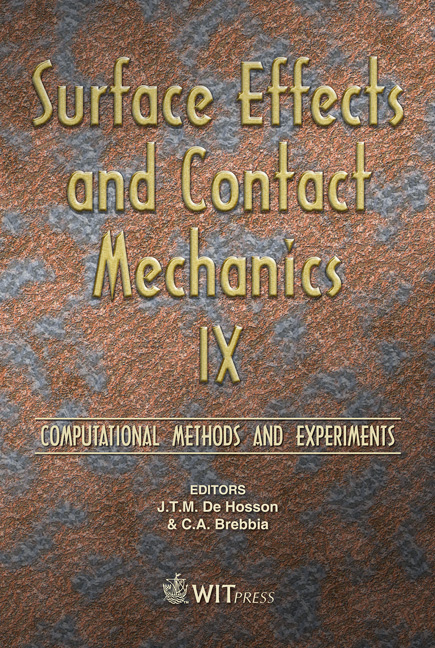Durability Of Domestic Scroll Compressor Systems
Price
Free (open access)
Transaction
Volume
62
Pages
12
Page Range
229 - 240
Published
2009
Size
1,962 kb
Paper DOI
10.2495/SECM090211
Copyright
WIT Press
Author(s)
I. Tzanakis, M. Hadfield & Z. Khan
Abstract
A thorough surface examination of the main components of a scroll compressor after part uses was conducted. This was performed in order to identify the possible tribo-mechanical effects (abrasion, cavitation, erosion etc) which occur on the substrate of these components. Three dimensional interferometer surface scanning and scanning electron microscopy (SEM) were used for surface analyses. Subsequently the parts were used to perform sliding tribological tests using a special purpose built modified microfriction machine to clearly identify their wear and friction mechanisms. The main interacting material parts of the scroll were identified and used for bench tests. The experimental conditions were adjusted to those of the industrial applications. The critical components for durability were identified on the tip seal and the plate of the scroll compressor. These components are manufactured from high performance fluoroelastomer and high carbon steel materials. The rational behind these tests is to assess the durability and performance of the scroll compressor system. This specific scroll compressor consists of two involute scrolls; the one orbits eccentrically in respect to the other, compressing various refrigerants. The scroll was under operational conditions for more than 300 hours within a CHP system. The microscopic and the sliding results showed that cavitation on the steel plate is an issue to be taken into consideration. Two and three body abrasive wear dominates and can considerably affect the durability and the performance of the scroll. Keywords: compressor, scroll, abrasion, cavitation, fluoroelastomer, steel.
Keywords
compressor, scroll, abrasion, cavitation, fluoroelastomer, steel





